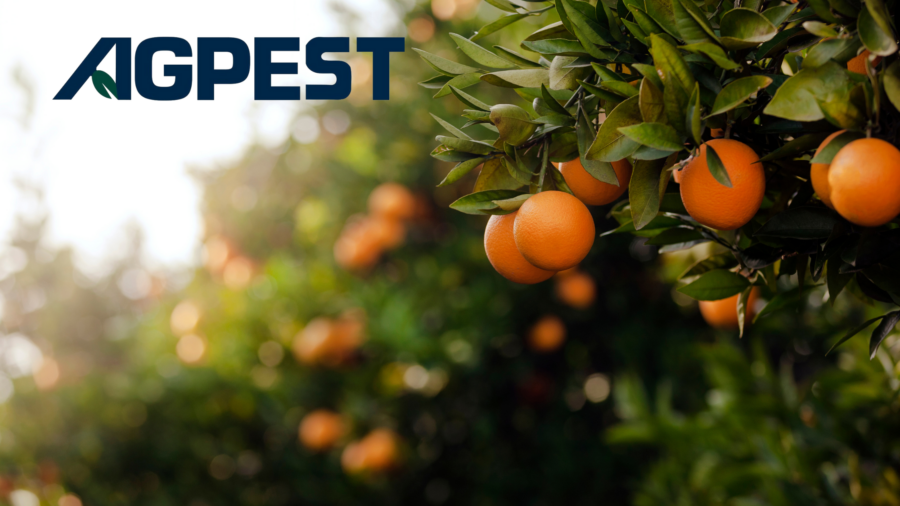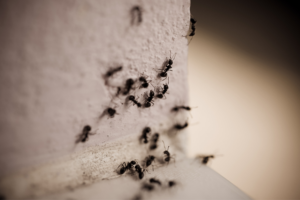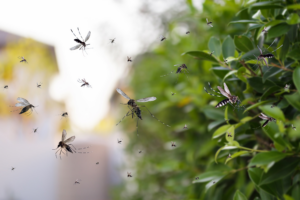San Diego’s warm climate makes it an ideal place for growing a variety of fruit trees, from citrus and apples to avocados and peaches. However, this favorable environment also attracts numerous pests that can harm your trees and reduce your harvest. At AgPest, we understand the importance of maintaining the health of your fruit trees. Here’s a comprehensive guide on identifying and controlling common fruit tree pests to ensure your trees stay healthy and productive.
Common Fruit Tree Pests and Their Signs
Aphids
- Identification: Small, green, black, or brown insects found on the underside of leaves.
- Affected Trees: Citrus, apple, pear, and plum trees.
- Signs: Curling leaves, sticky honeydew residue, and the presence of ants.
Fruit Flies
- Identification: Tiny flies with a yellow-brown body and red eyes.
- Affected Trees: Citrus, peach, and avocado trees.
- Signs: Small puncture marks on fruit, premature fruit drop, and larvae inside the fruit.
Codling Moth
- Identification: Small moths with grey wings that lay eggs on fruit.
- Affected Trees: Apple, pear, and walnut trees.
- Signs: Entry holes in fruit, frass (sawdust-like excrement), and internal feeding damage.
Spider Mites
- Identification: Tiny, spider-like pests often red or yellow in color.
- Affected Trees: Citrus, peach, and avocado trees.
- Signs: Yellowing leaves, webbing on the underside of leaves, and leaf drop.
Scale Insects
- Identification: Small, immobile insects covered with a waxy coating.
- Affected Trees: Citrus, olive, and fig trees.
- Signs: Yellow spots on leaves, stunted growth, and sticky honeydew residue.
How to Control Fruit Tree Pests
Aphids:
- Control: Spray with insecticidal soap or neem oil. Encourage natural predators like ladybugs.
- Prevention: Regularly inspect trees and remove affected leaves. Avoid over-fertilizing.
Fruit Flies:
- Control: Use fruit fly traps and baits. Remove fallen fruit promptly.
- Prevention: Harvest fruit as soon as it ripens. Use fine mesh netting to cover trees.
Codling Moth:
- Control: Apply pheromone traps to disrupt mating. Use horticultural oil to smother eggs.
- Prevention: Remove infested fruit and debris. Apply beneficial nematodes to soil.
Spider Mites:
- Control: Use miticides or insecticidal soap. Increase humidity around trees.
- Prevention: Keep trees well-watered and dust-free. Introduce predatory mites.
Scale Insects:
- Control: Apply horticultural oil or systemic insecticides. Prune heavily infested branches.
- Prevention: Regularly inspect and clean tree bark. Avoid planting trees too close together.
Tips to Prevent Fruit Tree Pests
- Maintain Tree Health: Healthy trees are more resistant to pests. Ensure proper watering, fertilizing, and pruning.
- Regular Inspections: Check your fruit trees regularly for signs of pests. Early detection is key to effective control.
- Sanitation: Keep the area around your trees clean and free from fallen fruit and debris to reduce pest habitats.
- Beneficial Insects: Encourage natural predators like ladybugs, lacewings, and predatory mites to help control pest populations.
- Proper Spacing: Plant fruit trees with adequate spacing to ensure good air circulation and reduce the spread of pests.
If you’re struggling with fruit tree pests or want to ensure your trees remain healthy and productive, our professional pest control services can help. Contact us today to request a free pest control quote. Our experts will assess your situation and provide customized solutions to protect your fruit trees and enhance their health.
Maintaining the health of your fruit trees is essential for a bountiful harvest. With proper pest control and prevention strategies, you can enjoy the fruits of your labor without the worry of pests. Trust our pest control company to keep your trees thriving year-round!



